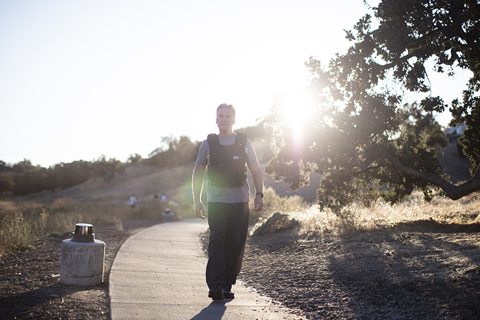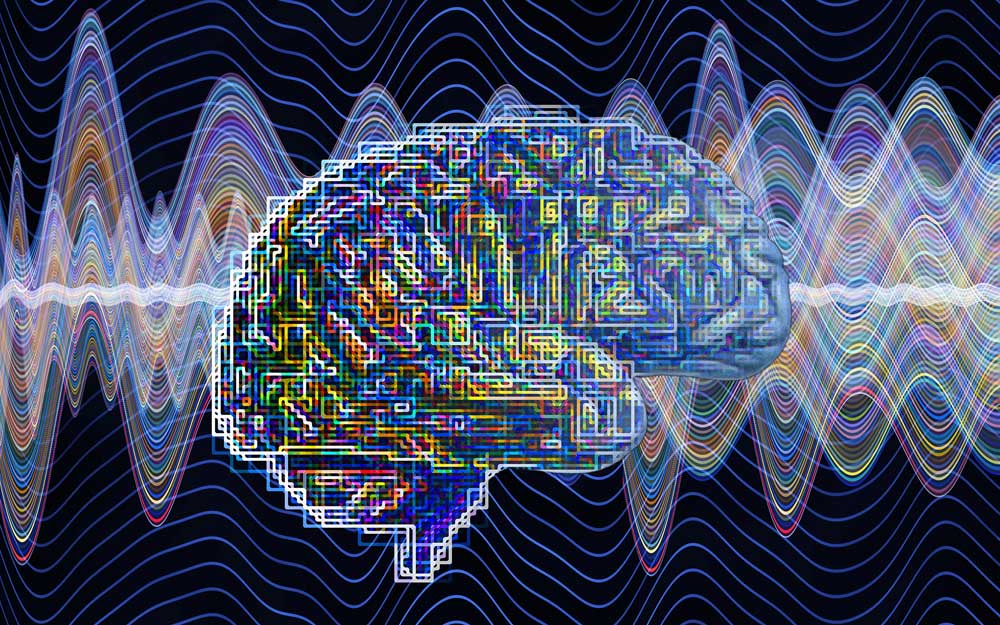Cedars-Sinai Blog
Back on Top of the Mountain
Oct 07, 2019 Cedars-Sinai Staff

Mark Odle reached the peak of his law enforcement career. Then an epilepsy diagnosis brought him to a low point in his life. Today, he's free of seizures and independent.
Everyone thinks "normal" is something different, says Mark Odle.
When normal wasn't normal anymore
Normal ended in an abrupt stop of traffic. One moment, he glanced at the sky as the cars in front of him flowed smoothly. In the next instant, he was many yards ahead of where he'd just been and traffic was stopped. He turned his bike hard, but still flipped off his bike and over the car. The next thing he remembers is being flat on his back, afraid to move, while one of his own motorcycle officers peered over him, asking if he was all right.
Mark was in two more serious car collisions before being diagnosed with epilepsy.
Seizures that never looked like seizures

"After my last motor vehicle accident, I knew something was wrong," Mark says. "I couldn't even with confidence walk down the sidewalk anymore. What if I shut off, and I walked directly into moving traffic?"
Mark's seizures never looked like the seizures everyone typically imagines. He never convulsed. He would simply "turn off" for seconds at a time. For Mark, it was akin to a brief dizzy spell. These auras would start then end without him being aware of the seconds that passed. Only after speaking with Chrystal Reed, MD, a neurologist in Cedars-Sinai's epilepsy program, did he understand that the auras or "episodes" he had since childhood were seizures.
Medications were not effective in stopping his seizures. Doctors implanted electrodes in his brain and monitored him in the hospital for two weeks to determine where the seizures in his brain started. The results showed they were coming from both sides of his brain, though more of them started on the right side.
The next treatment option they tried was a responsive neurostimulation, or RNS, system—a kind of brain pacemaker that would detect the electrical activity of a seizure in the brain and interrupt it before it could happen. With the device implanted in his brain, Mark faithfully kept a daily seizure journal to record the time and duration of the auras and seizures. In addition, the device tracked and reported his brain activity.
The RNS device helped some, but the seizures continued. Sometimes he'd go several days without one, but he was averaging around 15 a month. With the seizures continuing, Mark mostly stayed in his home.
"When I retired as a commander from the CHP with 38 years of service as a police officer, I felt like I was leaving my law enforcement career on top of a mountain," Mark says. "Then, I felt like I'd fallen down to the bottom and was looking up. I wondered, 'Will I be normal again?' I wanted my life back."
His last seizure

His seizures reduced, but Mark says he wasn't looking for "better." He was looking for "right," which for him, meant no seizures.
While the device didn't stop his seizures as hoped, it did provide hundreds of hours of data on how his brain was functioning. That allowed his doctors to pinpoint the trouble area: His right hippocampus. Dr. Reed and his neurosurgeon, Adam Mamelak, MD, conducted a test on his brain function, to check that he'd still be able to speak, form memories, and control his body even with part of his brain causing the seizures removed.
On November 13, 2018, Mark had surgery to remove his right hippocampus. He also had his last seizure that morning. The RNS system in his brain confirms that he's had no further seizures since.
To get back in shape, Mark took up walking in April 2019. By the end of that month, he'd logged 125 miles. He's on track to walk 1,000 miles by the end of the year. The last 200, he's walked with a 50-pound weighted vest.
"Everyone thinks "normal" is something different."
A normal walk for Mark is 6 ½ miles along a bike path in Santa Clarita wearing a 50-pound vest.
In August, he bought a new car. Two days after he purchased it, he got back behind the wheel for the first time in years.
"I never thought that being 'normal' would be such a gift," he says. "If normal means being independent and not being reliant on other people, then I'm thrilled to be normal."

What Is a Seizure?
A seizure is a symptom, just like a fever. It's not a disease. It happens when there's a disturbance in the brain's normal electrical activity.



